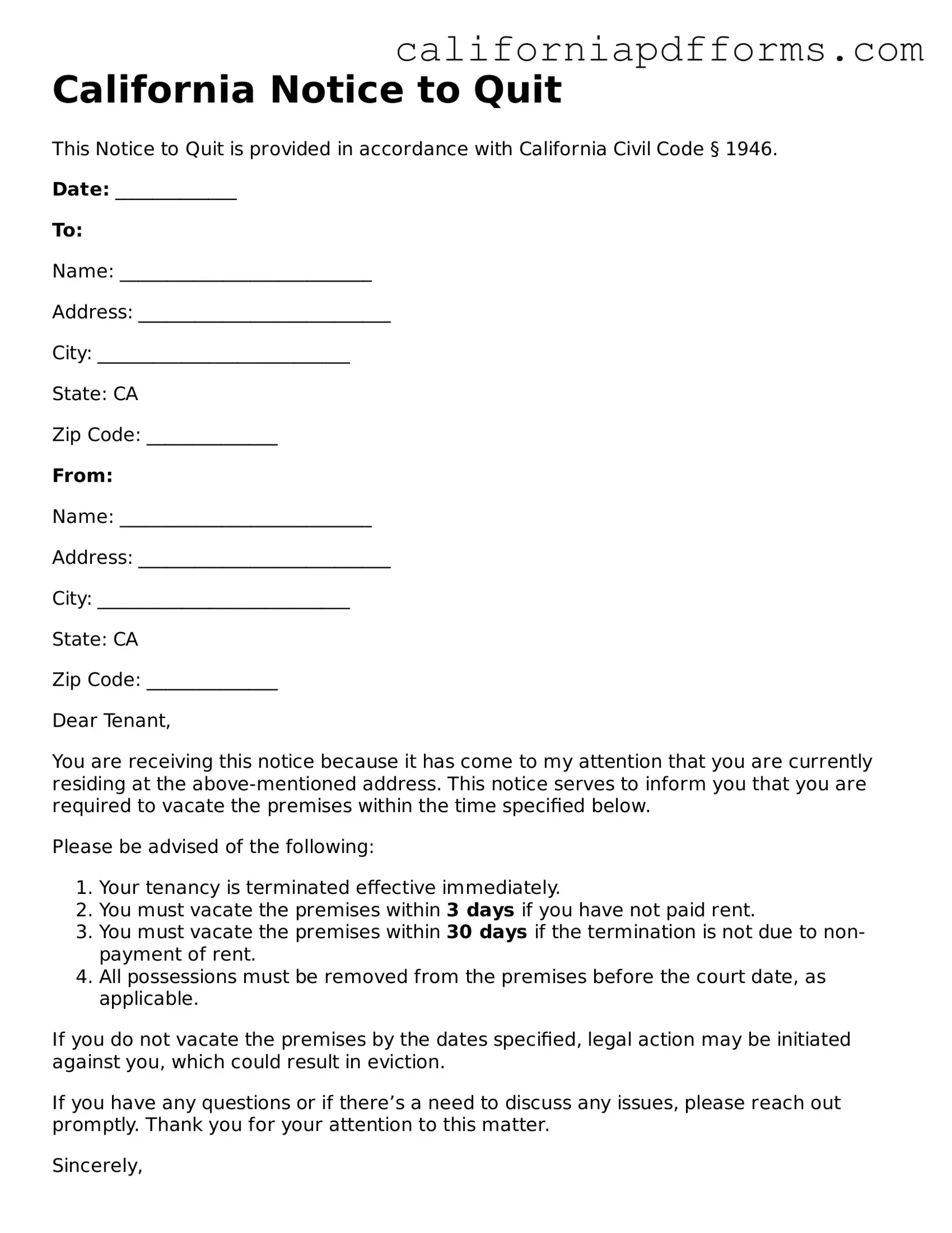What is a California Notice to Quit?
A California Notice to Quit is a legal document that a landlord uses to inform a tenant that they must vacate the rental property. This notice is typically issued when a tenant has violated the terms of the lease or rental agreement, such as failing to pay rent or engaging in illegal activities on the premises.
When should a Notice to Quit be issued?
A landlord may issue a Notice to Quit under several circumstances, including but not limited to:
-
Non-payment of rent.
-
Violation of lease terms.
-
Engaging in illegal activities.
-
Subletting without permission.
Each situation may require a different type of notice, such as a three-day notice for unpaid rent or a thirty-day notice for lease violations.
A Notice to Quit should contain the following essential information:
-
The date of the notice.
-
The name and address of the tenant.
-
The reason for the notice.
-
The specific action the tenant must take, such as vacating the premises.
-
The time frame within which the tenant must comply.
Providing clear and concise information helps avoid confusion and potential disputes.
How long does a tenant have to respond to a Notice to Quit?
The time frame for a tenant to respond to a Notice to Quit varies based on the reason for the notice. For example:
-
A three-day notice for non-payment of rent requires the tenant to pay the overdue rent or vacate within three days.
-
A thirty-day notice for lease violations typically gives the tenant thirty days to remedy the situation or move out.
It is crucial for tenants to act promptly to avoid further legal action.
Can a tenant contest a Notice to Quit?
Yes, a tenant has the right to contest a Notice to Quit. If a tenant believes the notice is unjust or that they have not violated any lease terms, they can respond to the landlord. Open communication may resolve the issue without escalating to eviction proceedings. Legal advice may also be sought to understand their rights and options.
What happens if a tenant does not comply with a Notice to Quit?
If a tenant does not comply with the Notice to Quit, the landlord may initiate eviction proceedings. This process typically involves filing a lawsuit in court. The landlord must follow legal protocols to obtain a judgment for eviction, which may include a court hearing where both parties can present their cases.
Is a Notice to Quit the same as an eviction notice?
No, a Notice to Quit is not the same as an eviction notice. A Notice to Quit serves as a preliminary step, informing the tenant that they must vacate the property. An eviction notice, on the other hand, is issued after legal proceedings have been initiated and typically follows a court judgment allowing the landlord to evict the tenant.
Can a tenant be evicted without a Notice to Quit?
Generally, a tenant cannot be evicted without a proper Notice to Quit. California law requires landlords to provide notice before initiating eviction proceedings. Failure to provide this notice can result in delays or dismissal of the eviction case in court.
A California Notice to Quit form can often be found online through legal aid websites, local court websites, or by consulting with a legal professional. It is important to use a form that complies with California law to ensure it is valid and enforceable.
